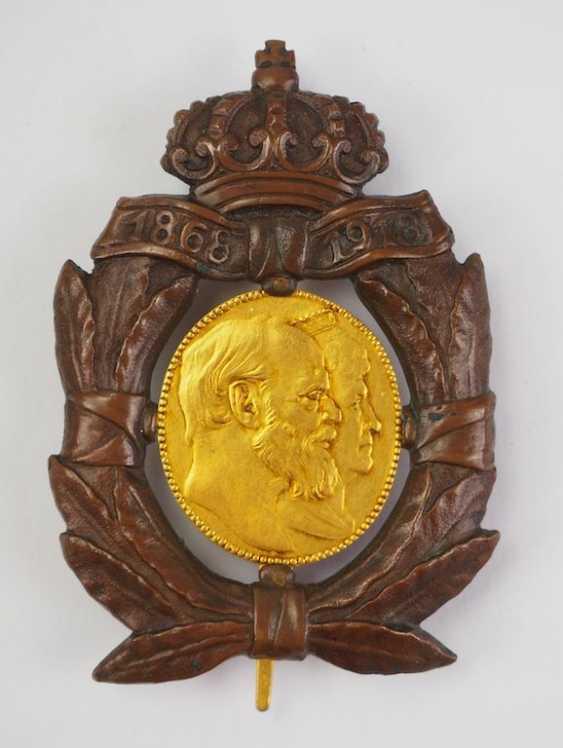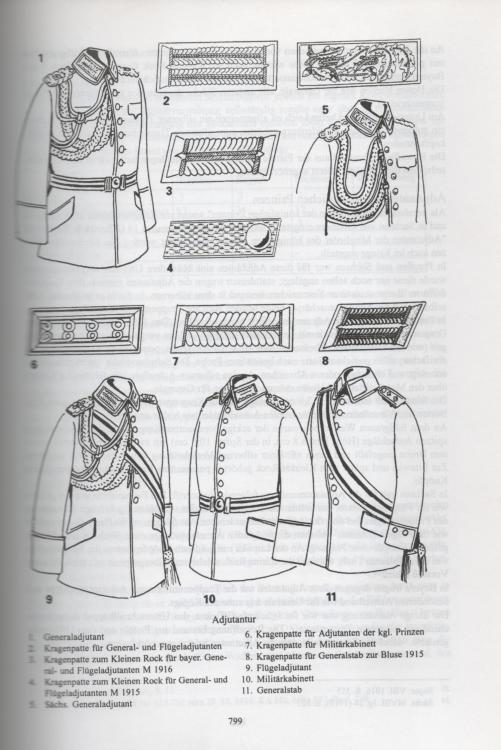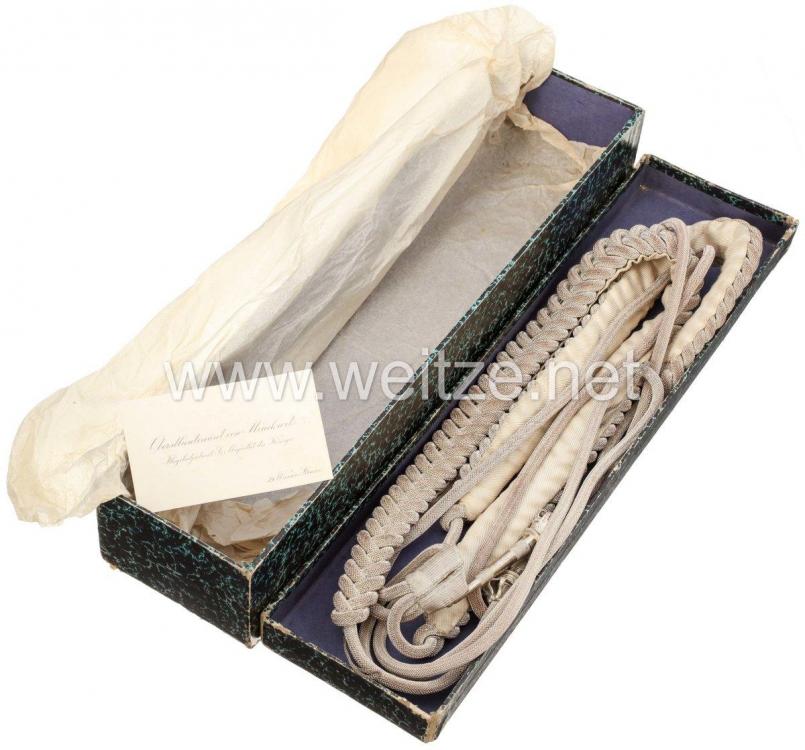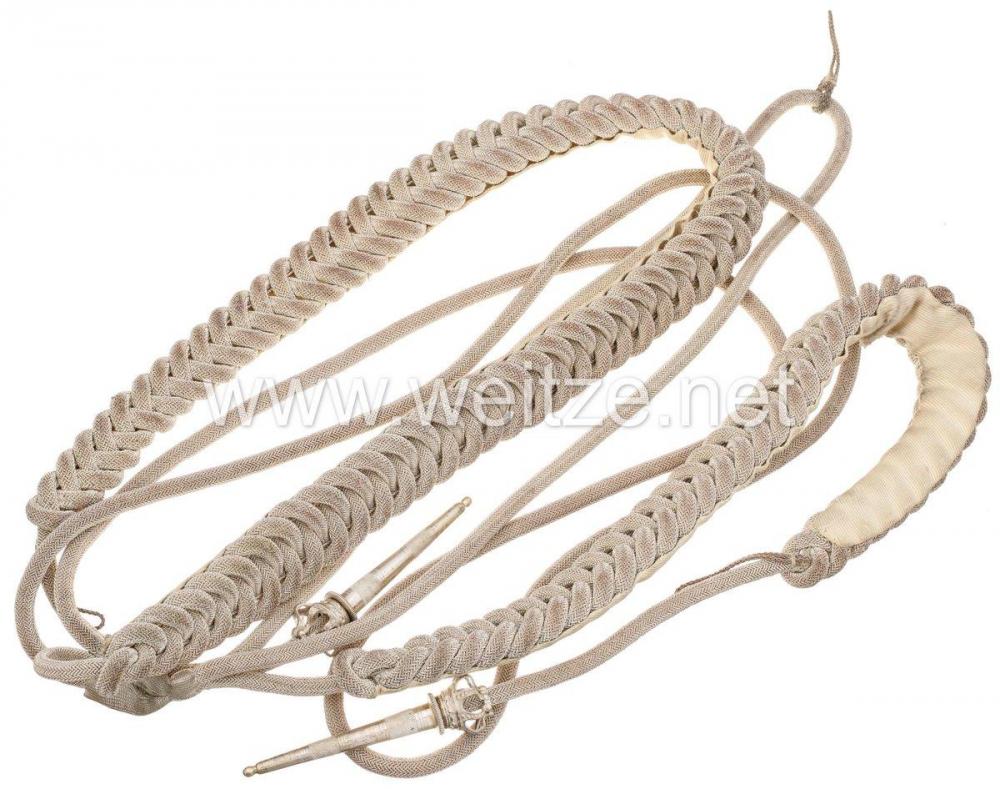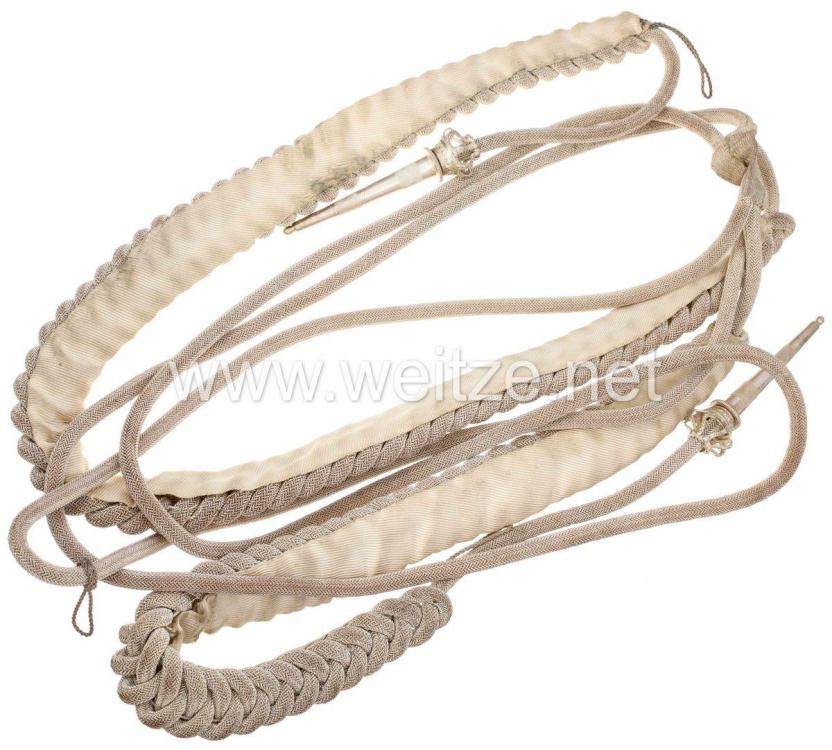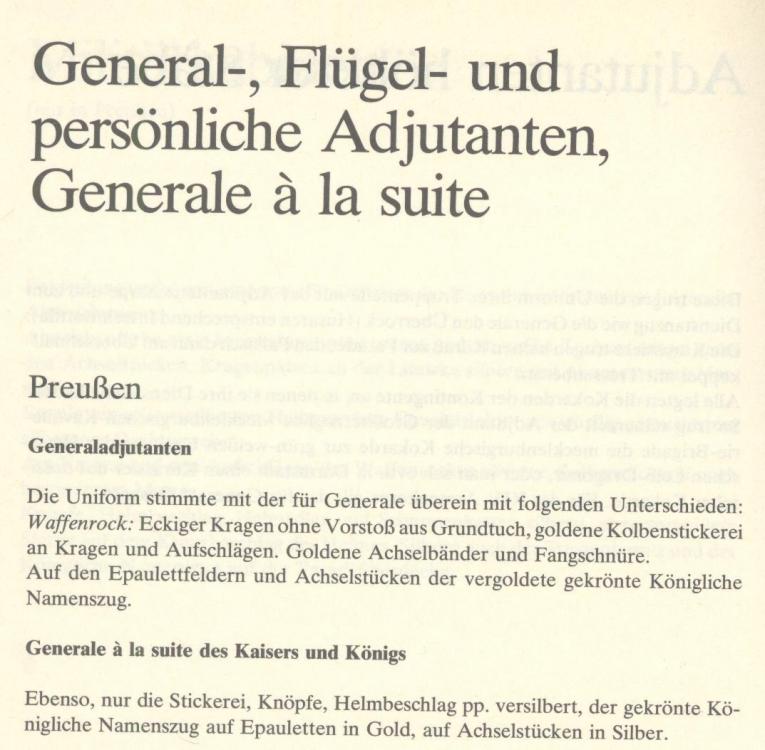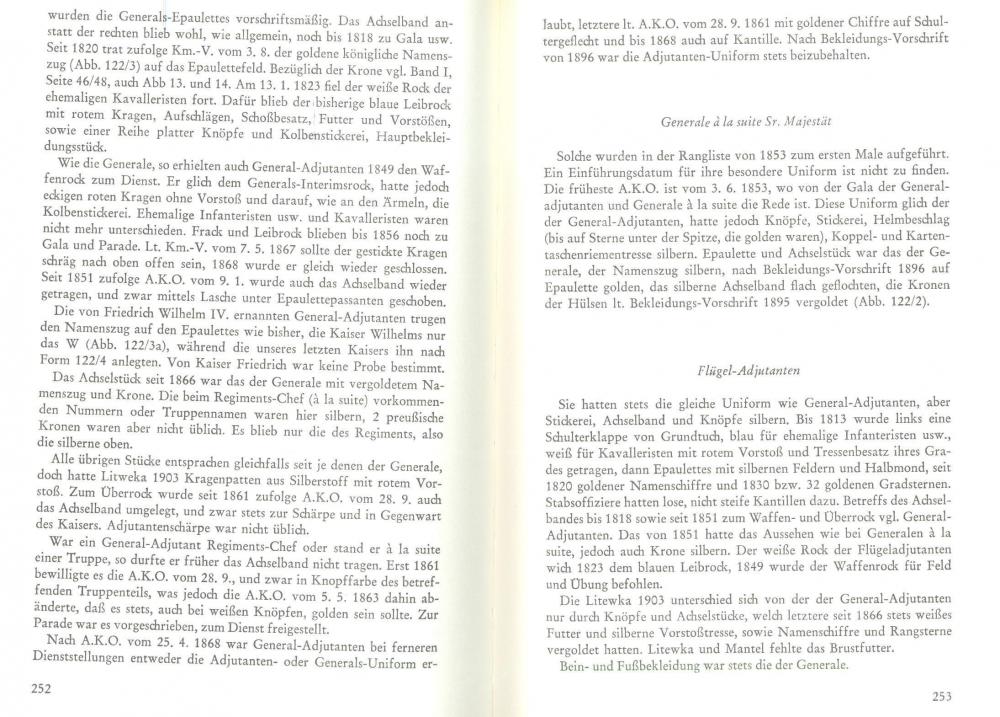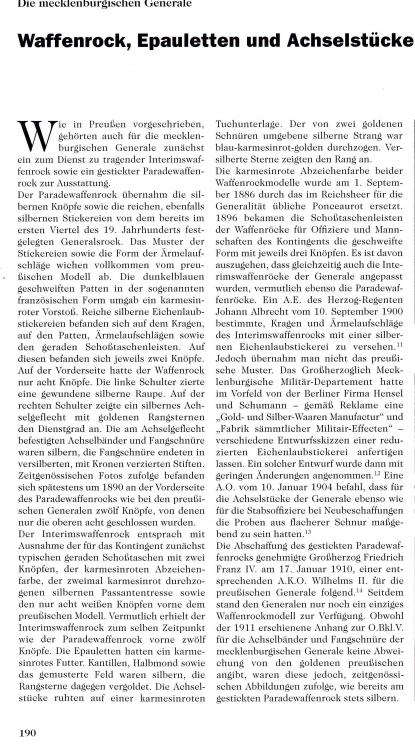
GdC26
Active Contributor-
Posts
971 -
Joined
-
Last visited
-
Days Won
7
Content Type
Profiles
Forums
Blogs
Gallery
Events
Store
Everything posted by GdC26
-
Ok, this one has been nagging me. Since there is nothing in the lists besides the FJO komtur that would be worn on the right breast, I've gone back to my references to see what Bavarian officers did wear on the right side. Not much, as it turns out, at least not much in terms of true decorations (they did wear commemorative - unit - badges etc. to post war veterans meetings). But I did find one thing that might fit: the Erinnerungszeichen an die Goldene Hochzeit 1918. Not unlikely for an adjutant to the king, and worn on the right breast, roughly on the spot of the second paidr of loops, as the post war pic below confirms. So: FJO on upper right breast, with the Erinnerungszeichen underneath it?
-
I've checked my further references, particularly the Bavarian Rangliste 1918, but have not found anything more definitive. Note that the June 1916 dated Castell Bluse shown in the pic below has two sets of loops on the right breast, with the upper set placed appropriately for the FJO. FJO stars are quire heavy, especially compared to Steckkreuz type awards like the Officierskreuze of orders of various German states. The commander stars are also comparatively compact in size - so if the vertical spacing between the loops is wide enough (and wider than an Offizierskreuz of say the Oldenburg Hausorden or the Bavarian Michaelsorden) they could have held an FJO commanders star. However, the set up on the blouse could be seen to argue against that, and could suggest that von Castell had another, Offizierskreuz level award that would be worn on the right side, beneath the FJO.
-
Here you go, two of several: https://www.weitze.net/militaria/Preussen_39.html https://www.sammler-cabinett.de/shop/de/militaria-allgemein-effekten-muetzen-uniformteile-usw-deutsches-kaiserreich.html From the pic, the plm strikes me as a copy from well after 1918 - but then I guess you know that. Kind regards, Sandro
-
Charles, In response to your various e-mails and posts, as Glenn pointed out, the M 1910 for Flügeladjutanten did not have breast pockets - see enclosed scans, particularly plate 9, and the further pic from the tunic showing a detail not evident from the ones on Helmut's site. Castell-Castell probably (and correctly) continued wearing this tunic also after his 1918 promotion to general rank. which as Glenn notes, did not come with a promotion to Generaladjutant. I once owned this piece and never felt uncomfortable with it. Sandro
-
Happy to hear that. I have not checked this, but consider it likely that there were differences between German states as well in the prescribed model of the agulettes for generals - I recall a discussion on different styles of crowns etc. Do the simpler aguilettes you refer to look like those shown in the attached pics? There are the Flügeladjutanten Aguilettes I referred to in an earlier post. Sandro
-
Ok, I've had a quick look at the sections of Knötel/Pietsch/Collas and Pietsch, Formierungsgeschichte, and must correct a comment I made above: Generaladjutanten des Königs von Preußen golden aguilettes, Generale a la Suite des Königs (von Preußen) und Kaisers silver. To that extent, your theory could be/have been correct - but the descriptions mention no deviations from the standard general's pattern. The texts are reproduced below. The first one desribes the Aguilettes for ordinary generals (basically, the pattern shown in your pics, consisting of two cords (Fangschnure) and two three-braided Ächselbänder), the second the regulations for generaladjutanten and generale a la suite des Königs und Kaisers. Both of these come from Knötel/Pietsch/Collas. The third scan comes from Paul Pietsch, Formationsgeschichte. It deals with the uniforms for Prussian Generaladjutanten in quite a bit of detail, including the color (gold) and use the aguilettes (mandatory on the overcoat as per the AKO of 28. September 1864 (!)) but makes no mention of a special pattern for Generaladjutanten. It does mention special aguilettes for Generale a la Suite des Königs und Kaisers, who according to the Bekleidingsvorschrift 1895 wore silver flat woven aguilettes with golden crowns. Wilhelm II and Mackensen may have worn their aguilettes as Generaladjutanten, but the sources mentioned do not indicate that a different pattern was prescribed from that worn by "ordinary" generals. Hope this assists. Sandro
-
Nicely highhanded response (if you had bothered to check my posts you would have seen that I have owned some general’s items in my time, and do in fact read German, which sort of helps in studying regulations and primary and secondary sources. Anyway, not sure exactly what you are seeking to debate, but the regulations I thought yousaid you sought can be found in the references cited above, and are referenced, too, in the book we both apparently have, and from which I reproduced a page. That page, for example, mentions continued use of silver braided sguilettes by MS general’s even after regulations were changed to prescribed gold ones. Adjutant aguilettes in the Prussian army were silver (check out Weitze’s site, he sold one this week from last week’s update), as are those of general’s a la Suite.Wilhelm’s are standard, gold general’s aguilettes, as can be seen in the Doorn pieces shown in the book you own/referenced, in pics on the web of his tunic on displsy in Berlin, and even the pic you yourself posted confirms. So, I think, are Mackensens, based on the pic you posted, and several on the web. I sought to confirm this from pics of his uniform on display in Rastatt, but noticed that that is on display without aguilettes. Not sure if this answers, because I’m not clear on your question: but for Wilhelm II at least I’m quite certain thst his aguilettes had no relationship with his status of former adjudant of his grandfather: his cypher and adjudantenabzeichen bore witness to that, and his sguilettes are, euh, well, simply the wrong color ... Sandro
-
The aguilettes shown are parade accoutrements that to my knowledge have nothing to do with Mackensen or Wilhelm II being adjutants. There is some good info on relevant regulations in older books like Knötel/Pietsch/Collas, Atlas des deutschen Reichsheeres and Paul Pietsch, Formations- und Uniformierungsgeschichte des preußischen Heeres, Band II, none of which I have handy as I'm traveling. More recently, Die deutsche Generalität published by Verlag Militaria also has some good pics and info, and is probably available in English: https://www.militaria.at/Book.aspx?book=1596672&language=de Hope of use. Sandro
-
Thanks Hucks. I may do that, but someone on WAV gave me this list: Orden und Ehrenzeichen: 00.00.0000 EK 2. Klasse 00.00.0000 Königl. Bayer. Militär-Verdienstkreuz 3. Klasse mit Schwertern 00.00.0000 Ehrenkreuz für Frontkämpfer 00.00.0000 Dienstauszeichnung 4. Klasse 00.00.0000 Kriegsverdienstkreuz 2. und 1. Klasse mit Schwertern 01.05.1945 Deutsches Kreuz in Silber


.thumb.jpg.c080ea9f6ddfdd26192a6ef7f34c39a8.jpg)
